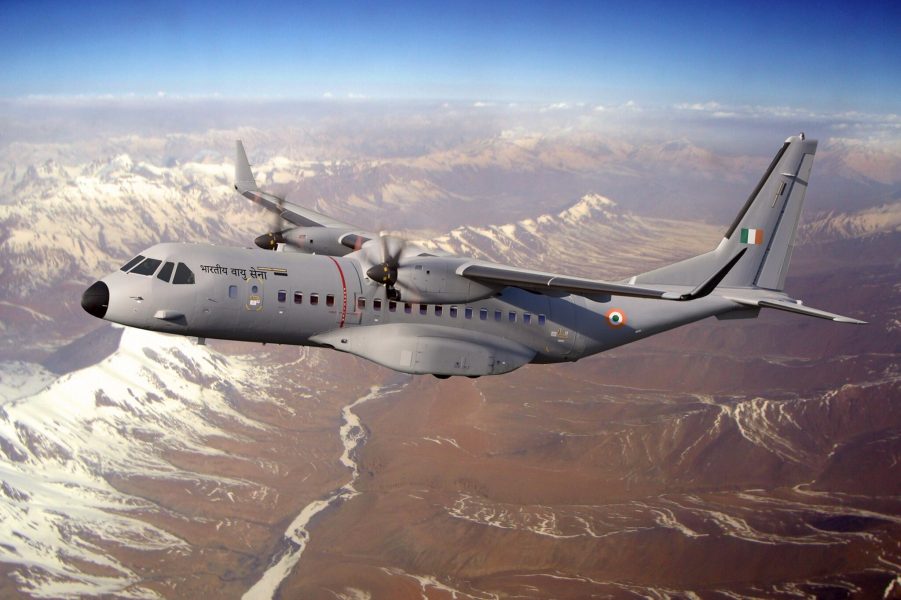
C295 a baby step; aircraft making in India has a long way to go

A long-standing refrain about India’s aerospace industry has been the inherent internal inefficiency of the public sector and the step motherly treatment meted out to the private sector.
In recent years, the government has taken steps towards levelling the playground and extending its patronage, hitherto preserved for the public sector Hindustan Aeronautics Limited (HAL), to competent players in the private sector.
There have been some remarkable achievements by private companies in recent years but, as India is not producing any aircraft (HAL is still working on a copy of the Dornier it license-produced for years), they have been restricted to producing components for foreign Original Equipment Manufacturers (OEMs). Thus, a demonstrated potential for aircraft manufacture has been in place, but the opportunity denied for exploiting its promise.
On September 8, the Rubicon was crossed when the Cabinet Committee on Security (CCS) approved the procurement of 56 C295MW transport aircraft produced by Airbus Defence and Space SA, Spain. Characteristically, the government machinery has taken over a decade to process the proposal initiated by the Indian Air Force (IAF) in 2010 to replace its Avro HS748s.
Also read: Tatas are going to make Airbus C295 planes in India. Here are the details
The Request For Proposal (RFP) was issued internationally in 2013 but only a single bid was received from Airbus and Tata Group. The Defence Acquisition Council approved the deal in May 2015, but since then, there have been reports of delays, with the past three years being taken up for an inordinately long price negotiation.
A formal contract has been signed on September 23 with Airbus for ₹22,000 crore; the cheering bit is that, while Airbus will supply the first 16 aircrafts manufactured in its facility in Spain, the remaining 40 will be assembled in India by Tata Advanced Systems Limited (TASL), a wholly owned subsidiary of Tata Sons, and the strategic Aerospace and Defence arm of the Tata Group.
TASL is both an operating and a holding company headquartered in Delhi and is Tata Group’s lead entity to explore aerospace manufacturing prospects in India (and internationally). It has already proven its competence by becoming the single source global supplier for Sikorsky S 92 Helicopter Cabin Assembly including Wire Harness Installation, Lockheed Martin C 130 J Empennage and Centre Wing Box Assembly, and Detailed Part Manufacturing (Tata Sikorsky JV) with capabilities in Machining, Sheet metal forming, tube bending, special processes and quality assurance. In the past, it has also assembled the Dornier 228 for RUAG and indeed, has had the capability to assemble/manufacture full aircraft since 2015.
An allied but distinct contract is also likely to be signed with Airbus for performance-based lifecycle product support of the IAF C295 fleet. This deal will cut down IAF’s long term maintenance costs and help set up a regional C295 maintenance hub.
The tailender of these 56 C295s will be inducted into the IAF in another decade as the 40 being produced in India are planned to take ten years. However, the initial inductions of 16 aircraft slated over the 48 months of the contract being signed, will provide substantial succour to the existing situation where the Avro HS-748s are struggling to fly. According to World’s Air Forces 2021 published by Flight International, IAF has 57 Avro HS748s on its strength.
The fact that they were first inducted in the 1960s, is an indicator of their age-related problems (reliability, maintenance and cost of sustenance). As they attrit over the next few years and fall away like fatigued combatants, the C295s trickling in will replace them, thus providing a huge relief to the transport aviation tasks of the IAF, as also the Army and the Navy.
The IAF also has 104 AN-32s on its strength and in the past, there was a plan for HAL (with Russian collaboration) to produce a Multi-Role Transport Aircraft (MTA) as a future replacement for AN32s. While the HAL website still shows the MTA as work in progress, the other symptoms of the project indicate mortality. Thus, the C295 may also be required in larger numbers so that it can replace the AN32 when it shows symptoms of senility. Having an established C295 assembly line in India would then make them ready to step in and relieve the shortfall thus created.
The C-295 is undoubtedly the most versatile and efficient tactical transport aircraft currently available in the world in the light/medium segment. It can carry 71 passengers (7.05-ton payload) as compared to the 58 and 50 for the Avro and the AN32 respectively, and has slightly higher cruise speeds than those two. It also has a 2200 feet Short Take off capability from unprepared surfaces (according to Airbus site).
Also read: Tata lauds ‘Make in India’ thrust as nation seals military aircraft deal with Airbus
The planned procurement is no doubt a laudable step towards bolstering the IAF’s transport needs but some of the media coverage on it is just government-sponsored hype, terming the assembly as ‘manufacture’ would be grossly imprecise.
While associating the Indian assembly of C295s to ‘Make in India’ and ‘Atmanirbhar Bharat’ is not entirely inaccurate (after all, some manufacture activity is indeed taking place in India, and some offset benefits will also accrue), TASL (and India) have a long way to go to be able to “manufacture” aircraft, with critical components and assemblies (the power plant being the most significant) still beyond reach. One hopes that the offset and transfer of technology terms and conditions in the contract help India move closer to meaningful self-reliance.
(The Federal seeks to present views and opinions from all sides of the spectrum. The information, ideas or opinions in the articles are of the author and do not necessarily reflect the views of The Federal)

